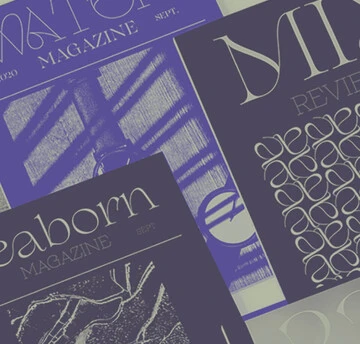Six myths about text in augmented and virtual reality.

Augmented and virtual reality (AR and VR) technologies have made incredible leaps in both capabilities and adoption over the past year. Many brands are embracing AR/VR as new touchpoints for their customers, but understanding the role that text can play in these new mediums and implementing it well can be challenging.
We’ve compiled six common myths around text in AR/VR environments, and reasons why these obstacles and challenges don’t hold true.
-
Typefaces that work well for an app or a website will work well enough for AR/VR.
While AR/VR is sometimes consumed through a website, each medium has unique requirements, meaning that a font that works well in an app or a website may not work well in an AR or VR environment. VR is a stereoscopic, immersive environment, which means depth plays a big role in how content is consumed. Moreover, given that the hardware for VR is still evolving, there are concerns around VR sickness and nausea, especially with prolonged use, so it’s important to have text that is legible and can be processed by the user without much effort.
When it comes to AR, the field of view is not as tightly controlled as it is with VR. The background can change every time the user moves, meaning that text needs to be legible no matter the background color, texture or depth. Choosing fonts that feature open letter shapes, ample letter spacing and unique attributes are all ways to help ensure legible text in AR.
-
Text is not needed in AR/VR experiences.
When thinking of AR/VR, often the first thing that comes to mind is video games. After all, this is how the technology is often used in popular media. But the true potential of AR/VR cannot be realized without text. Imagine a training application delivered through VR without words, or a mechanic using an AR application to identify different parts of a car engine without the names of those parts, their part numbers or directions on how to repair them. Even the simplest video games require text to display scores, health levels, instructions and more.
While there are some experiences that might not need text, most AR/VR experiences can benefit from having it, especially considering that a large share of the revenue from these technologies will come from enterprise applications. No enterprise tool in use today avoids using text, so AR/VR applications shouldn’t be any different.
-
Text distracts the user from the immersive nature of an experience.
While poorly designed and implemented text distracts the user from the immersive nature of an experience, text that is designed to be aesthetically pleasing, legible and properly placed will add to a virtual or augmented experience. In fact there are instances where the lack of text distracts the user from the experience. We’ve seen instances where people using VR to view architectural designs without text were required to listen to a second person explain the experience. Naturally, this outside narration detracted from the experience, and could have been avoided with some effective placement of text.
If done well, a good AR or VR experience should feel natural and the user should be able to gather key points with minimal effort. Think of the important messages you want to convey , for example, the kind of material used in a design in the instance stated above, and see how you can use text to convey this. Ideally, you would have text dispersed in your experience in a non-obtrusive way so that the user isn’t distracted by the text, but it adds value at the right point in time.
-
Bitmaps work for text in other display experiences so it makes sense to use the same approach for AR/VR.
Strictly speaking, using bitmaps for text even in flat, 2D experiences isn’t ideal because of the inherent challenges of bitmaps with poor rendering quality, a lack of scalability across sizes, languages and more. However, environments like AR/VR add even more complexity, which exacerbate the problems inherent with bitmap fonts. Take for instance, the fact that in AR, the background is unpredictable and ever-changing, so ensuring text legibility becomes even more challenging. This is where tuning the text to change its thickness and sharpness is helpful, but this is hard to do (if not impossible) with bitmaps.
Early on, bitmaps were a viable solution given there was a limited scope of what they needed to display. Today, with dynamic content and a need for global support, bitmaps are no longer enough. We recommend using scalable type be it 2D or 3D. The benefits of using scalable type outweigh those of bitmaps, be it up front during integration, or on an ongoing basis.
Scalable font engines can provide a more resource, memory and time efficient way to implement text that scales across sizes, languages and can render at high quality in stereoscopic environments like VR.
-
AR/VR are relatively new mediums, so there’s no need to provide localized experiences yet.
While AR/VR is still an emerging space, there are a number of reasons for brands to provide localized experiences today. First, the rate of adoption of new technologies (e.g., the personal computer, the internet, smartphones, etc.) has been quickening over time, meaning that the “early stage” for AR/VR adoption is going to be shorter than what it was for previous technologies. In fact, localized AR/VR experiences are already an expectation of consumers.
Next, many large companies have global customer bases which means they can either create experiences without text that don’t live up to their full potential, or create experiences without localized text which risks alienating global customers.
Lastly, many non-Latin language regions (like in Asia Pacific) are expected to drive AR/VR adoption, meaning ignoring localization simply isn’t an option.
One of the challenges with AR/VR is scalability across devices and languages. Planning for these nuances up front will help avoid surprises later on. Consider the regions your brand will be expressed to identify the language requirements. Keep these in mind when choosing fonts so that you have a consistent look and feel across languages. By using scalable font technology with support for shaping and layout, you can add native global language support with minimal effort.
-
Selecting fonts for AR/VR is subjective.
Choosing the right font for any application, including AR/VR, requires an understanding of the many factors that influence designs.
While it’s true that the design industry doesn’t have as long a history with AR/VR as it does with other mediums, there are studies (many led by Monotype) that shed light on the types of fonts that work well in 3D environments. Monotype has worked with the leading institutions on research around legibility, which can help brands and designers determine what typefaces work for their needs.
Furthermore, Monotype has identified a list of font families that cover more than 100 languages, all of which are highly legible and offer brands the ability to find fonts that meet their branding requirements.
While brands and designers alike need to consider how text can be implemented in AR and VR environments, recent advancements in technology have made it easier to ensure a legible, scalable, consistent and pleasing experience to use text in these applications.











